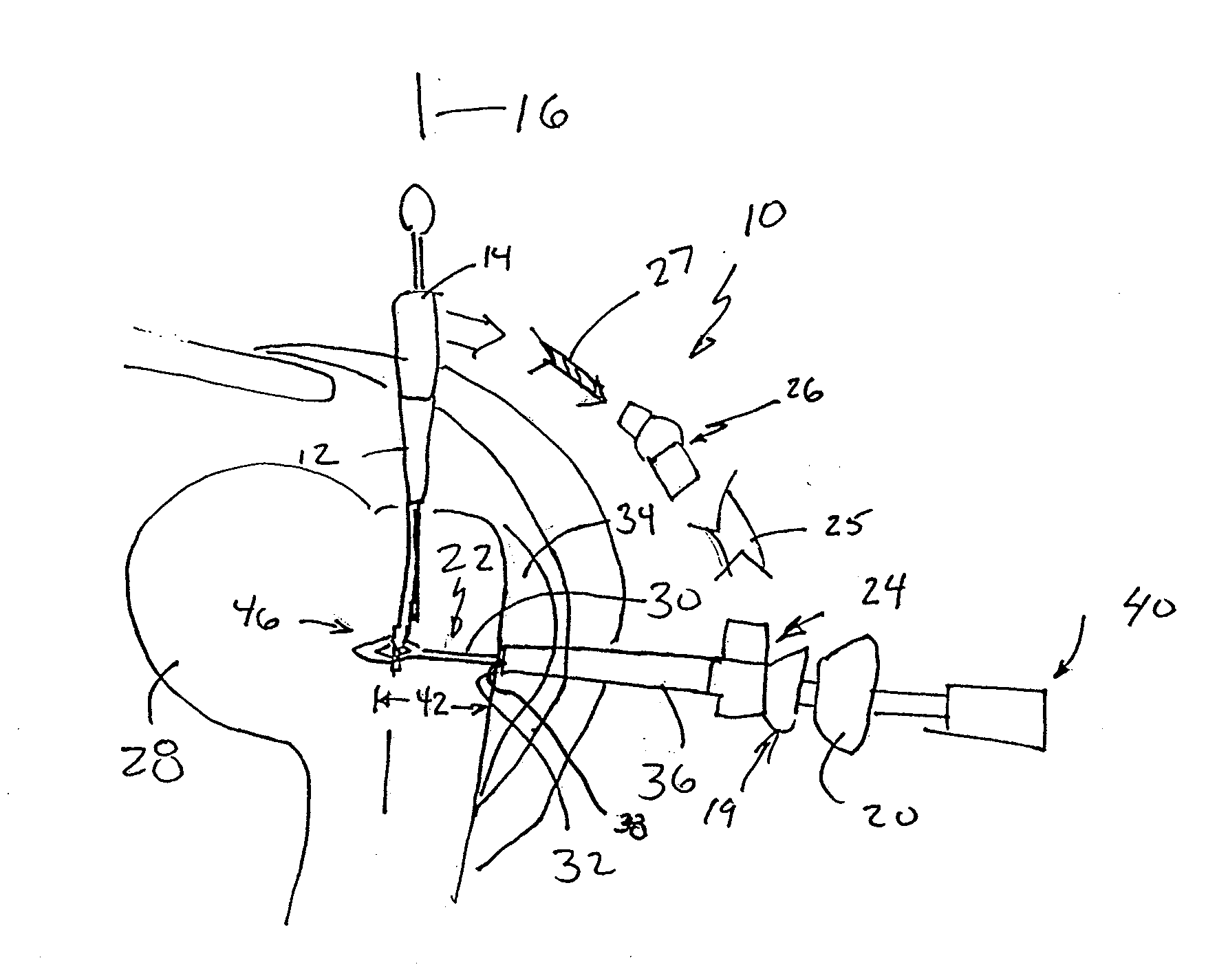Surgical Drill Guide With Awl and Method of Use
a drill guide and surgical technology, applied in the field of drill guides, can solve the problems of limited number of anchors, difficult to run a wire through the bore, and inability to achieve precise placement over long distances, and selectively position much of the structure
- Summary
- Abstract
- Description
- Claims
- Application Information
AI Technical Summary
Benefits of technology
Problems solved by technology
Method used
Image
Examples
Embodiment Construction
[0039]FIG. 1 shows a drill guide 10 of a presently preferred embodiment of the present invention. The drill guide 10 has a sleeve 12 received in sleeve housing 14. Sleeve 12 may be directed along sleeve axis 16 such as with an indexing or insertion mechanism 18 possibly including an electrical drill or other appropriate device such as a cannulated awl. U.S. Pat. No. 5,458,602, incorporated by reference, shows one style of housing 14 and sleeve 12, but there are certainly others as would be known by those of ordinary skill in the art that would work satisfactorily.
[0040]Pin 22 is shown connected to arm portion 24. Various arm portions 25,26,27 are shown with broken lines such as an articulated column arm portion 26. Further detail regarding an articulated column arm portion is discussed below. Configurations such as a flexible or otherwise movable wire 27 or other connection, or rigid, i.e. non-movable arm 25 to connect pin 22 to drill 15 and / or sleeve 12 may also be utilized. Any or...
PUM
 Login to View More
Login to View More Abstract
Description
Claims
Application Information
 Login to View More
Login to View More - R&D
- Intellectual Property
- Life Sciences
- Materials
- Tech Scout
- Unparalleled Data Quality
- Higher Quality Content
- 60% Fewer Hallucinations
Browse by: Latest US Patents, China's latest patents, Technical Efficacy Thesaurus, Application Domain, Technology Topic, Popular Technical Reports.
© 2025 PatSnap. All rights reserved.Legal|Privacy policy|Modern Slavery Act Transparency Statement|Sitemap|About US| Contact US: help@patsnap.com



